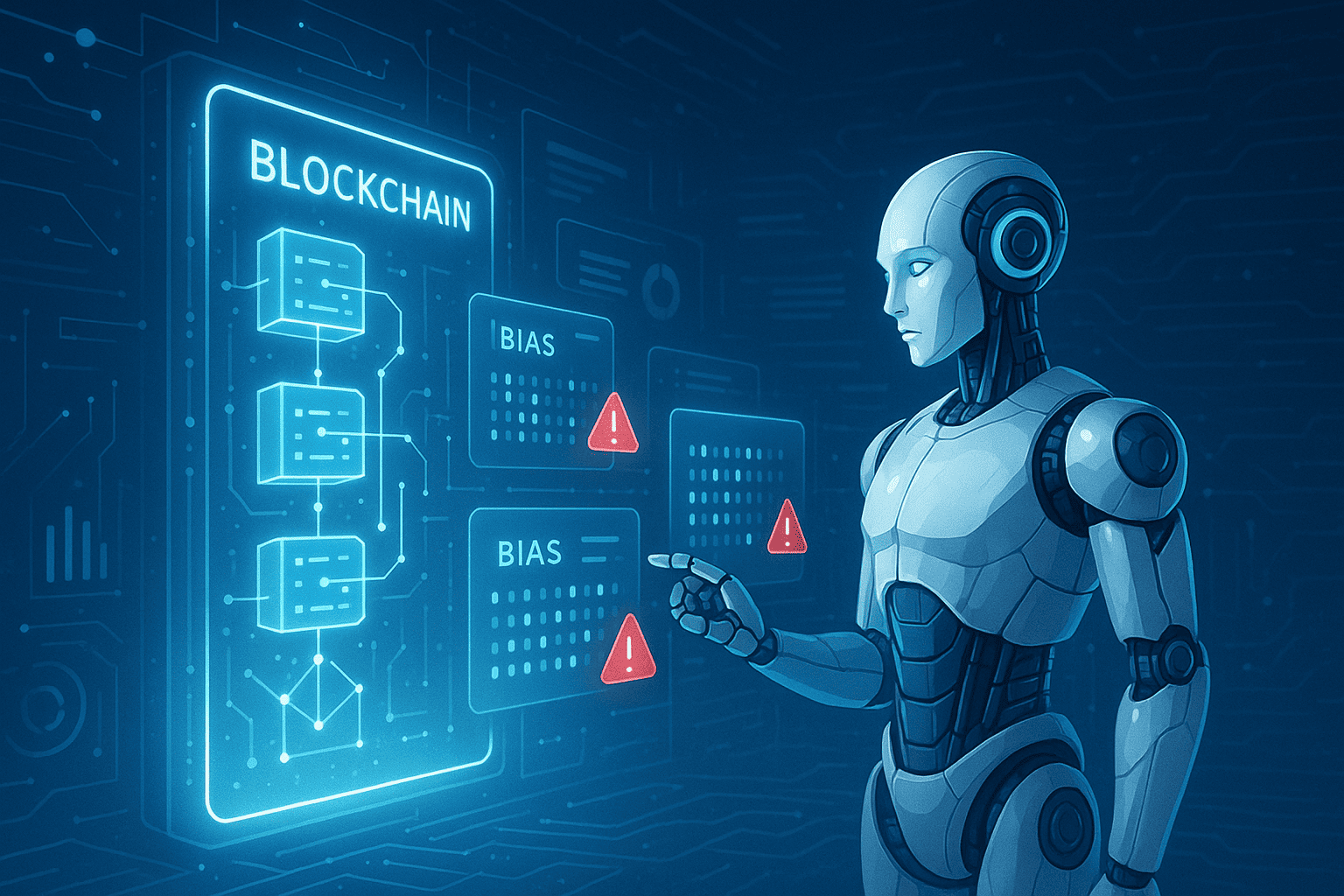
As artificial intelligence (AI) becomes more integrated into our daily lives — from credit approvals and hiring decisions to healthcare diagnostics and policing — a critical issue has emerged: AI bias.
AI systems are only as good as the data they’re trained on. And when that data reflects human biases, the algorithms often replicate or even amplify them. This can lead to unfair, discriminatory, and opaque decisions that affect real lives.
But there’s hope.
Enter Blockchain — a decentralized, transparent, and immutable technology that can bring accountability, traceability, and fairness into AI systems. When combined, these two technologies can help pave the way for ethical and trustworthy AI.
🧩 Understanding AI Bias: Why It Matters
AI bias occurs when an algorithm systematically and unfairly discriminates against certain individuals or groups based on race, gender, age, or other factors.
Real-World Examples:
- Hiring Tools that disfavor female applicants because the training data was dominated by male resumes.
- Facial Recognition Systems that struggle to identify darker-skinned individuals due to skewed training datasets.
- Healthcare Algorithms that provide less accurate diagnoses for underrepresented populations.
These aren’t just technical flaws — they’re ethical and societal risks.
🔍 The Root Causes of AI Bias
- Biased Training Data
AI learns from historical data. If the data reflects past human prejudices, AI will inherit those biases. - Lack of Transparency
Many AI systems are “black boxes” — it’s difficult to trace how a decision was made or what data was used. - Opaqueness in Model Updates
Changes to AI models often go undocumented, making it hard to track what was modified and why. - Centralized Control
In traditional AI setups, one organization controls the data, the model, and the decision — creating room for manipulation.
🔗 How Blockchain Can Help Eliminate AI Bias
✅ 1. Data Provenance and Transparency
Blockchain can record the origin of data used in AI training, ensuring full transparency over what data was used, when, and by whom. This helps identify and flag biased datasets early in the pipeline.
✅ 2. Immutable Logs for Audits
Every action — from data ingestion to model updates — can be logged on a blockchain, creating a tamper-proof audit trail. This enables better regulatory oversight and ethical auditing.
✅ 3. Decentralized Data Ownership
Blockchain allows data contributors (e.g., patients, users) to retain ownership and control over their data, deciding if and how it’s used in AI systems.
✅ 4. Consensus for Fairness
Communities can vote on which datasets are fair or representative using smart contracts — creating democratic governance for AI development.
✅ 5. Federated Learning with Trust
By combining blockchain with federated learning, AI models can be trained across distributed data sources without sharing raw data, preserving privacy and reducing centralized bias.
💡 Real-World Application
Imagine a decentralized AI hiring platform.
- Candidate data is stored securely on a blockchain.
- The AI model used for screening is open-source and version-controlled via blockchain.
- Every decision the AI makes is logged transparently.
- Auditors and stakeholders can review whether the AI disproportionately rejected candidates of a certain gender or ethnicity.
The result?
An ethical, auditable, and transparent AI system — powered by trustless technology.
🌍 Why This Matters
Combining AI and blockchain is not just a technical innovation — it’s a social responsibility. As we hand over more decision-making power to machines, it becomes essential to ensure those machines are fair, accountable, and transparent.
Blockchain offers the tools to make AI more trustworthy — not by replacing human oversight, but by enhancing it with transparency and traceability.
✍️ Final Thoughts
AI will shape the future — but blockchain can help shape it ethically.
As organizations continue to adopt AI across sectors, they must invest in tools that ensure bias doesn’t become automated discrimination. Blockchain offers a solution that is not just technical, but moral — helping us build a digital world that is not only smart, but also just.





